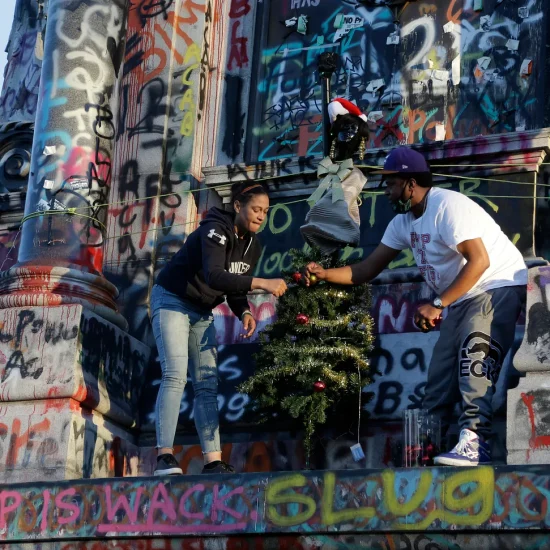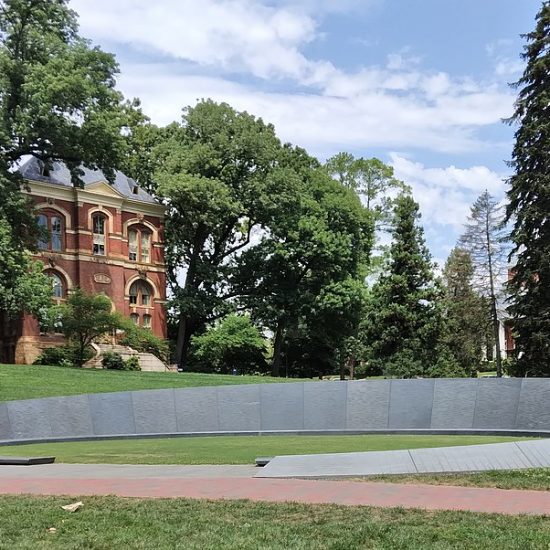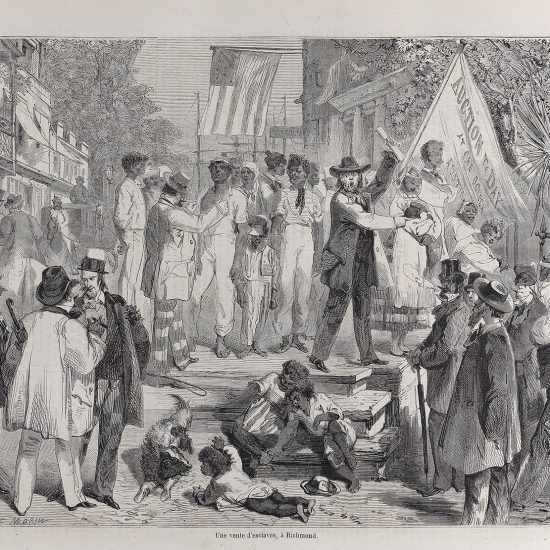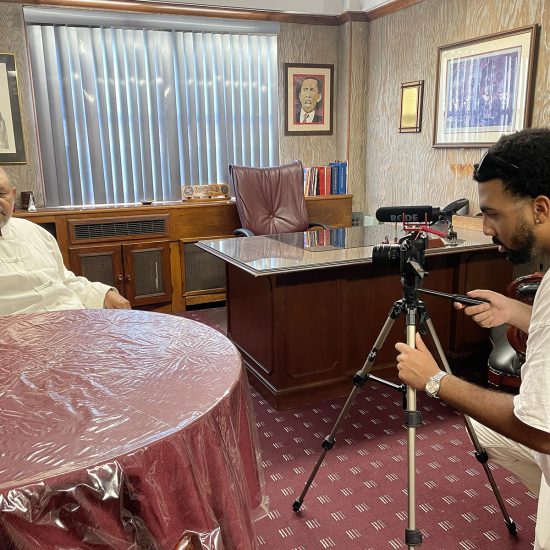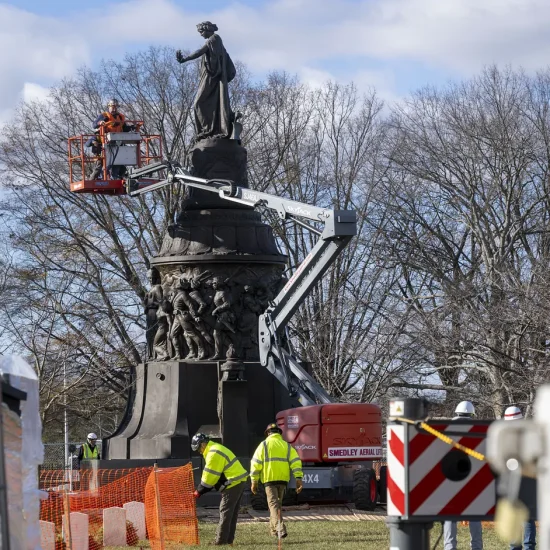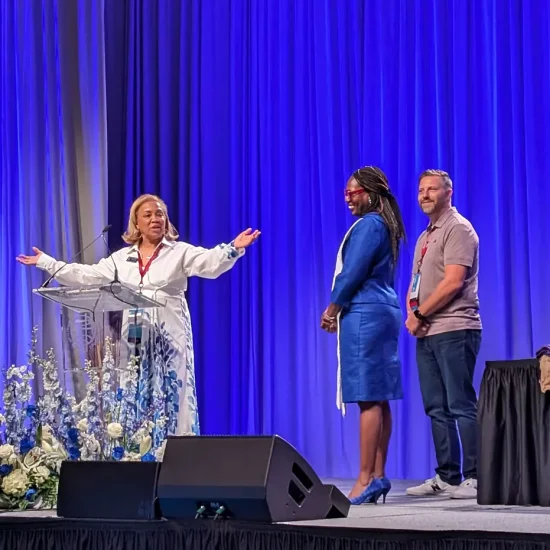SAN ANTONIO—Small details in the lives of the troubled students Tyler Shoesmith works with tell more than they would like him to know.
 |
It's the words they use, the clothes they wear—even the age of the people they spend time with or whom they connect with on Facebook. There's a reason behind all of it, said the director of family support services in San Antonio's North East Independent School District.
Thanks to attending a training session held by Traffick911—an anti-trafficking effort that grew out of Southside City Church in Fort Worth, Shoesmith is better equipped to understand the details. Some of the glimpses he sees now point to dark stories of prostitution and human trafficking.
As a result of the knowledge he gained during the training, Shoesmith has been able to identify trafficked children in San Antonio. The tips are small but consistent—a young woman who refers to someone other than her father as "daddy," dressing provocatively and spending time with older men.
The victims he's discovered? Two girls—a 15-year-old and a 17-year-old.
"You have to understand the language," Shoesmith said. "Language is the No. 1 thing. You have to understand what someone is saying."
They're isolated examples—and ones that admittedly have not resulted in being able to free the girls from their traffickers at this point. But they're symbolic of a shift taking place in the anti-trafficking movement, leaders say.
Anti-trafficking organizations continue trying to raise awareness about the atrocities of what they call "modern-day slavery," but they're increasingly making practical differences in the lives of victims and in legislation, said Tomi Grover, director of TraffickStop, a ministry supported by Texas Baptist gifts to the Mary Hill Davis Offering for Texas Missions.
Faith-based and other organizations are using a variety of methods to discover and "rescue" trafficking victims. By using a private investigator, Traffick911 recently rescued two girls from traffickers, including one who was sold as "Thanksgiving dessert." Groups like Traffick911 and TraffickStop are training individuals to recognize signs that indicate a person is being trafficked.
Next, groups like Refuge of Light and Traffick911 are attempting to build safe houses where rescued individuals can recover, a costly process that requires a safe environment. Safe houses are rare across the country. For a group like Traffick911 that discovers trafficking victims each month, that must change.
"We need to get a safe house here in North Texas," said Deena Graves, director of Traffick911. "We are discovering so many victims in North Texas. That's the primary way churches can help."
Refuge of Light, an anti-traficking ministry that has grown out of First Baptist Church in Palestine, is seeking to open such a safe house this year. The facility will be available to trafficking victims as early as the end of this year, providing the attention and care they need.
The Texas Baptist Christian Life Commission has pushed for legislation designed to curb trafficking and defend victims' rights. Woman's Missionary Union of Texas, in conjunction with national WMU, has sought to raise awareness of trafficking issues. Groups are building safe homes where rescued victims can receive the psychological, emotional, physical and spiritual attention they need to recover.
Traffick911 attempts preemptive measures, providing ministry to at-risk youth in an effort to keep them away from bad influences, including traffickers.
Grover describes the process of anti-slavery groups' actions—many of which are not networked with other abolitionist organizations—as putting drops in a bucket. Each action is another drop into a pail. With enough action by enough groups, the pail may eventually tip.
The new abolitionist movement is "picking up steam, and it's picking up presence," Grover said. "I don't know that we've reached a tipping point until we address government responsibility, personal responsibility, corporate responsibility."
Nadezda Shapkina, associate professor of sociology at Kansas State University, said the anti-trafficking movement is making a difference globally. Trafficking has been made illegal. More people are aware of the atrocity, its causes and effects on people. Victims also are receiving more services as a result of the work of new abolitionists.
But Shapkina cautions that progress does not mean victory is inevitable for the anti-slavery movement. When dealing with issues like this, situations may be improving. Then they may get worse. Because there are so many people involved, the environment changes regularly. Historically, when a form of slavery has been stamped out, another arises, further complicating the situation.
"Focusing on stages of social movement … is one way, but thinking in terms of stages often presupposes that there is some final—'ideal' or most developed—stage," she said in response to a question about anti-trafficking progress.
"The assumption is that there is a continuous progress in history, that we are moving towards a better stage—in this case, a stage without slavery. We have seen slavery abolished, but then it comes back in new forms. So, I would say that my position is that anything can happen in history—progress, regression, degradation, etc. There is no predestination. History is open-ended."
The primary difference between past slave industries and modern traders also is what makes contemporary abolitionist efforts so difficult, Shapkina said. Past slave trade was open and legalized. By changing the laws of a nation, slavery was ended. That's not the case with trafficking, creating the challenge of ending something with a hidden structure.
"Contemporary movements face a different reality. Slavery as a legal system is outlawed, but slavery-like practices still happen," she said. "This 'new' slavery is disorganized, highly mobile, and global in scope. It exists in the so-called shadow/informal sector of economy, outside of the state-regulated sector of economy."
It is a difficult battle, Grover admits. But it's one she sees an increasing number of people stepping up to fight. They make a difference however they can. Like those who helped William Wilberforce end the African slave trade in England, modern day abolitionists continue seeking justice and advocating for victims without knowing how close the end may be.
"I think part of the problem is we're in the middle of the forest, and all we can see are the trees and not the entire forest. There's so much going on. There are pockets of hope around the world," she said.
Time is running out for victims of trafficking; this atrocity must end now, Graves said.
"The average life expectancy of a child sold into this is just seven years. We don't have time to wait."
For more information about TraffickStop, visit www.traffickstop.com. For more information about Traffick911, visit www.traffick911.com. For more information about Reguge of Light, visit www.refugeoflight.org.

